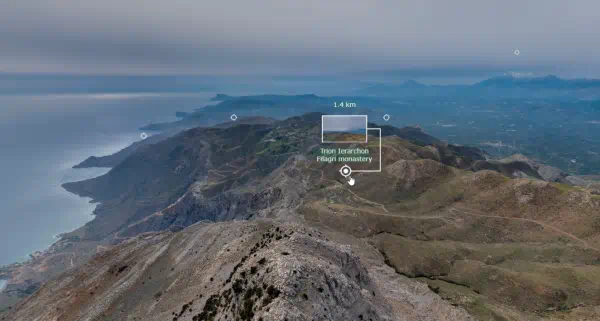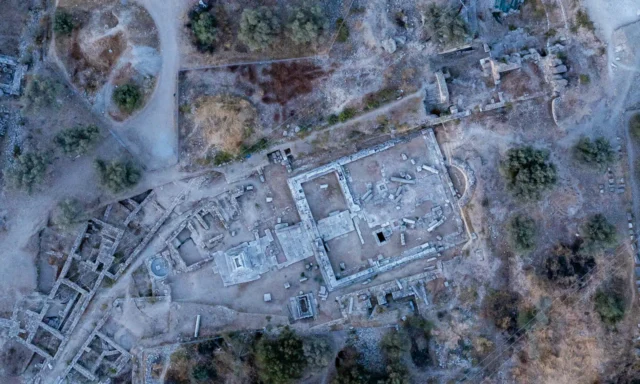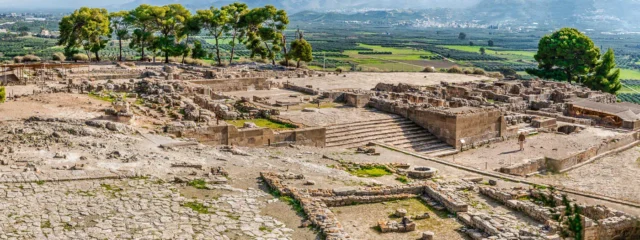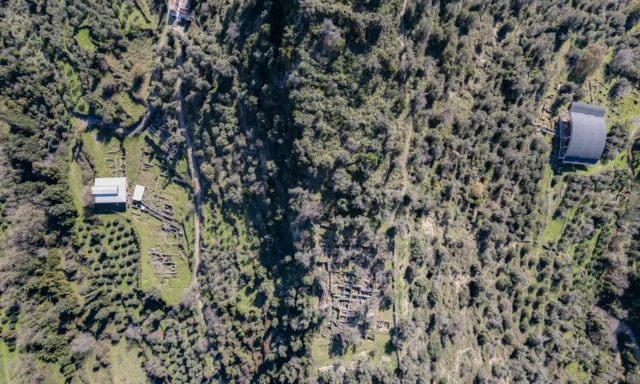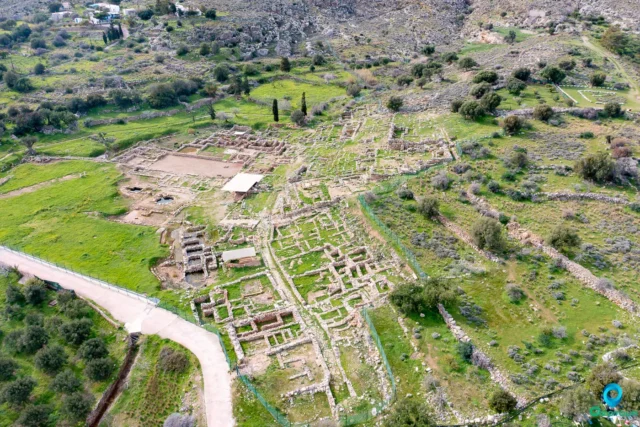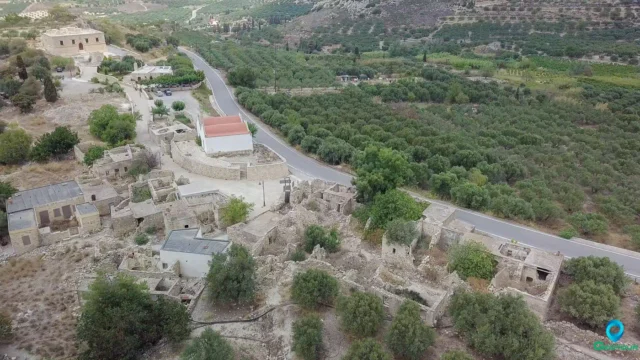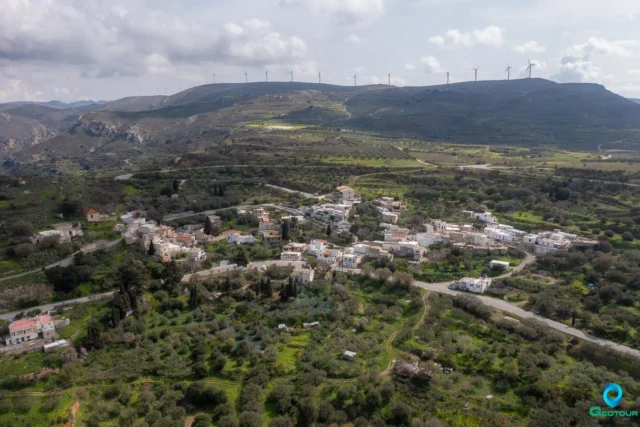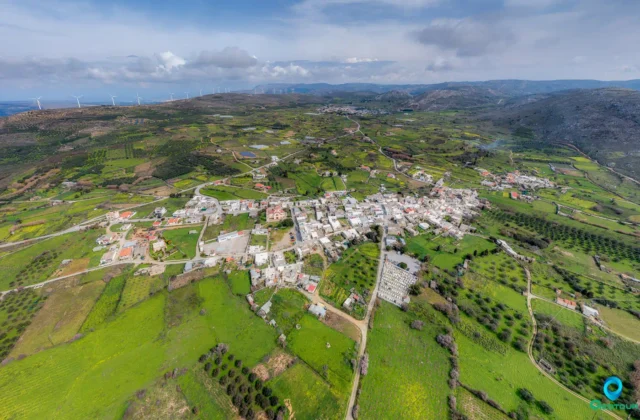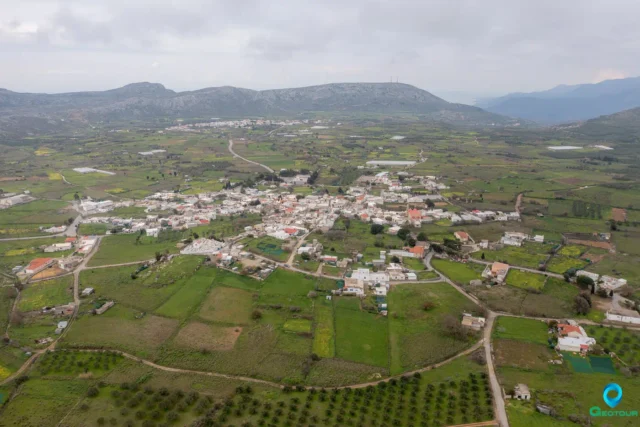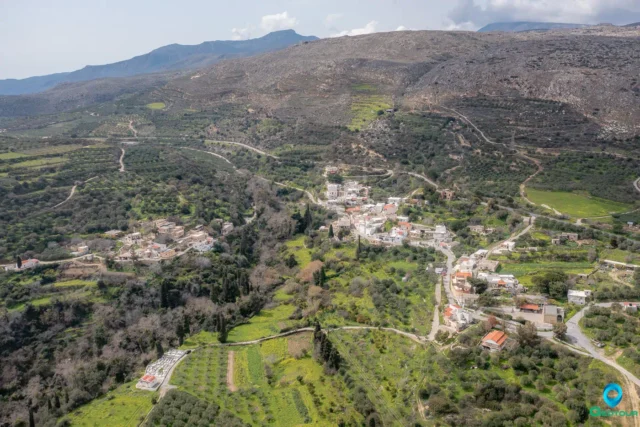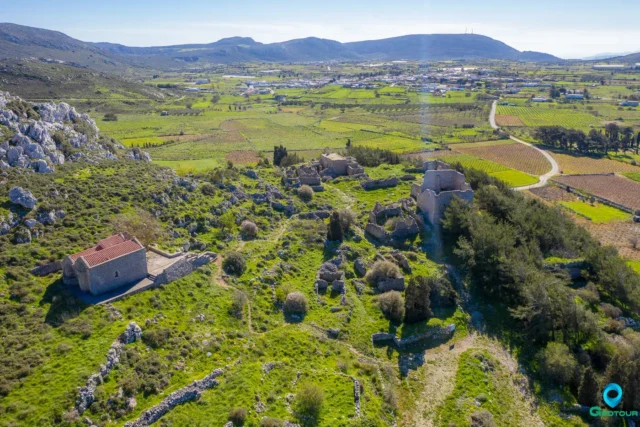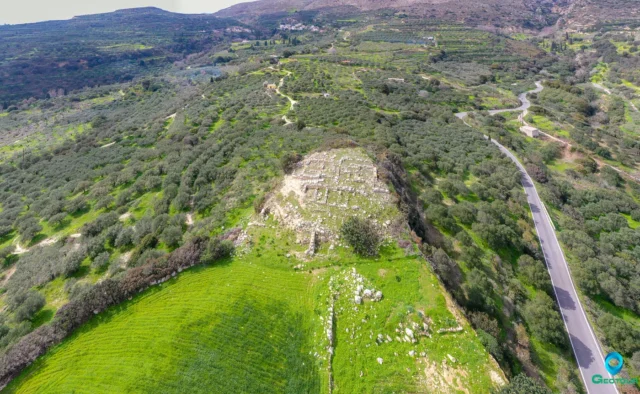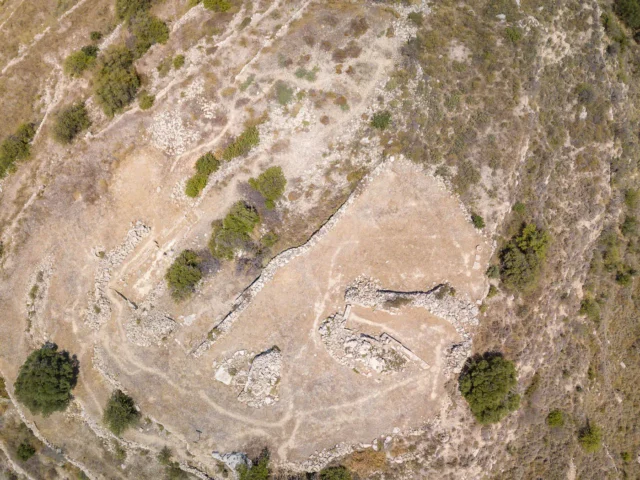Lithines (Λιθίνες) is a village in the municipality of Siteia, in eastern Crete. It is the seat of the local community of the same name. Lithines is located 25 kilometers southwest of Siteia, at an altitude of 275 meters. The village is thought to have gotten its name from the Litino family, which settled there during the second Byzantine period. The Byzantines installed the family, either Nikephoros Fokas after 961 or Alexios Komnenos in 1181, when he divided Crete among 12 families. Stergios Spanakis, on the other hand, reports that it is an ancient Greek toponym, which has survived unchanged.
The settlement has been designated as a historical listed monument “because its buildings as a whole belong to the 17th-19th centuries and display interesting architectural elements”. According to the 2011 census, it has 322 inhabitants.
History
The oldest mention of the toponym is in a document of 1369, where it is mentioned as a fief of Georgios Belis. In the 1583 census, Lithines had 175 inhabitants. The Venetians built a tower in the center of the village, which does not survive today, to ensure their rule in the area. It is believed that the tower belonged to the feudal family of Fragiskos Vlachos. It was destroyed by fire in 1828, when during the revolution of 1821, the revolutionaries led by Protopapadakis attacked the village of Roukaka (today Chrysopigi) and the Turks of the village left and shut themselves in the tower, a total of 140 armed men and 250 women and children, from where they defended themselves for two days. However, Georgios Tsouderos opened a hole in the wall and put in a barrel of gunpowder. Although the tower was not demolished, its floors caught fire, resulting in the deaths of all the defenders except for one woman who jumped from the tower. In the census of 1834, Lithines had 15 Christian and 2 Turkish families.
Landmarks
In the village, there is a single-aisled, vaulted church dedicated to the Virgin Mary which dates back to the 10th century and bears frescoes from the 13th-14th centuries. On its iconostasis is the icon of “Our Lady of Lithines”, from the 12th century, to which many miracles are attributed. Also, the church of Agios Athanasios dates back to before the 15th century, in which the family tomb of the Venetian noble family of Vlachos is located. According to the inscription, the temple was renovated in 1587. In the place of the old settlement of Adromili, there is the single-aisled Byzantine church of the Holy Apostles, with frescoes from the 14th century.
Since 1944, an Agricultural Cooperative has been operating in Lithines with the aim of producing and selling olive oil, which maintains industrial facilities with a centrifugation capacity of 10 tons of olive oil per day. In 1979 a cultural association was founded.
The old school of the village houses the cultural center of the village, which has been designated as a historical listed monument because “it is a very interesting special building of 1920, with strong neoclassical influences in its architecture and morphological structure, it is also a valuable element for the development of architecture and has been inextricably linked with the life and memories of the inhabitants of the area”.
Other Information
Lithines is a large village of the Municipality of Siteia built on top of a hill at an altitude of 276 meters from sea level and is surrounded by olive groves spread over the surrounding hills. It is located 26 km southwest of Siteia and had 322 inhabitants at the last census.
It is believed that the village took its name from the Byzantine nobleman Loukas Litinos and the family sent by Alexios Komnenos in 1182 along with 11 other families to Crete in order to strengthen the ties of the island with Constantinople.
In another reference, it is mentioned that the village dates back to the time after the liberation of Crete by Nikephoros Fokas in 961 from the yoke of the Saracens. The settlement was inhabited by the Litinos family (=Lithines) who were installed by Nikephoros Fokas and distributed the fertile land of the area to them, in exchange for their military services.
In the middle of the village, there was a three-story Venetian tower, which the Venetians built to ensure their dominance in the area. It is believed that the tower belonged to the feudal family of Fragiskos Vlachos, as the Vlachos coat of arms is preserved on a tomb in Agios Athanasios (near the village). When the Turks occupied the province of Siteia, they found the tower in excellent condition and immediately used it to supervise the area. The tower was completely destroyed by fire in 1828.
The Church of Panagia of Lithines dates back to the 9th century, while the frescoes date back to the 13th-14th centuries. On its iconostasis stands out the Holy Icon of “Our Lady of Lithines” of the 12th century, framed with countless offerings, because it is considered to be miraculous and is an object of reverence for the faithful of the wider area of the prefecture of Lasithi.
The church of Panagia belongs to the type of the single-aisled vaulted church with two transverse reinforcing arches and has dimensions of 5.35 x 8.60 m. On its south side, two elongated temples were successively added in recent years. The interior of the church is covered with frescoes from the 14th century, which are preserved in good condition only in a few places. Due to the relatively large size of the church, the iconographic program is particularly extensive with both the Christological cycle (nineteen scenes) and the Theotokos cycle (eight scenes) developed. The Second Coming dominates the west wall. Also interesting are the exquisite icons of the iconostasis as well as the inlaid glazed (enameled) plates on the south side of the church.
The Byzantine church of Agios Athanasios in Lithines of the 15th century or even older, a small single-aisled vaulted church, was converted with the addition of a narthex in 1603 in order to house inside it the family tomb of the most noble ruler Vlachos, as an inscription informs us.
No frescoes are preserved inside. Externally, on the south side of the church, another elaborate funerary monument was attached, an element that indicates that the church maintained a predominantly cemetery character.
At the lowest point of the valley of Lithines is the old settlement of Adromili amidst towering plane trees. Vaulted and built tombs were found in this settlement.
The Byzantine church of the Holy Apostles of the 9th century includes well-preserved frescoes from 1415, located in the Andromili area. It is a single-aisled church with a narthex on the side and in its right corner.
The particularly extensive Christological cycle of seventeen scenes in total occupies the eastern part of the arch, while it also extends to the western part, where it coexists with a part of the Second Coming which extends to the upper zone of the arch from the western wall. An interesting fresco on the south wall of the side space includes a large leafy cross as well as a depiction of the Synaxis of the Archangels.
The Old School of Lithines, which was bought in 1963 by the Agricultural Cooperative of Lithines and until 1990 was a warehouse of the Cooperative. In 1992 it was renovated through a European program and until today it is a cultural center of the village.
Settlement: Key Points
Location
- Lithines is located 25 kilometers southwest of Siteia, at an altitude of 275 meters.
Historical Significance
- The village was likely named after the Litino family, who settled there during the Byzantine period.
- Lithines has several historic structures, including a 10th-century church and the ruins of a Venetian tower.
Population Data
Year |
Population |
Notes |
|---|---|---|
1583 |
175 |
as Lithines |
1881 |
371 |
355 Christians, 16 Muslims |
1900 |
490 |
|
1920 |
456 |
|
1928 |
440 |
|
1940 |
538 |
|
1951 |
545 |
|
1961 |
585 |
|
1971 |
535 |
|
1981 |
459 |
|
1991 |
429 |
|
2001 |
399 |
|
2011 |
322 |
|
2021 |
259 |
Current Status
- As of 2011, the population of Lithines is 322.
- The village is a designated historical site due to its well-preserved architecture from the 17th-19th centuries.
- Lithines is home to an agricultural cooperative and a cultural association.
- The old school building has been repurposed as a cultural center.
References

